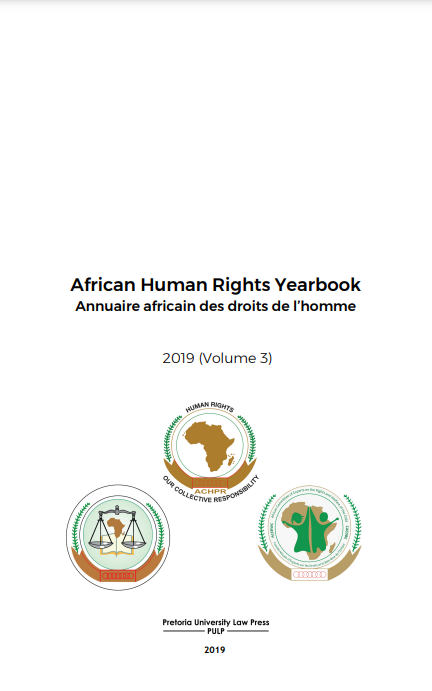Entre imperium illimité et decidendi timoré: la réparation devant la Cour africaine des droits de l’homme et des peuples
DOI :
https://doi.org/10.29053/2523-1367/2019/v3a16Mots-clés :
réparation, système africain, juridiction, compétence, judiciarisation, marge d’appréciation, équité procédurale et substantielle, légitimité, autorité, exécutionRésumé
RÉSUMÉ:Dans le contexte d’une Commission africaine des droits de l’homme et des peuples dont le pouvoir de réparation des violations a fait l’objet de contestation par les Etats, on peut avancer que l’adoption en 1998 du Protocole à la Charte portant création d’une Cour africaine des droits de l’homme et des peuples n’a pas eu pour unique ambition la judiciarisation du système africain des droits de l’homme. On note en effet que l’article 27(1) du Protocole à la Charte africaine des droits de l’homme et des peuples portant création d’une Cour africaine confirme l’existence dans la Charte d’un droit à réparation. Sur cette fondation normative, lorsqu’elle rend, le 14 juin 2013, son premier arrêt sur le fond dans l’affaire Reverend Christopher Mtikila c. Tanzanie, la Cour inaugure par la même occasion l’impérium que lui confère l’article 27(1) du Protocole. En revanche, en se prononçant sur les réparations un an plus tard, soit le 13 juin 2014, c’est la portée de son impérium que révèle la juridiction continentale. Sur la trajectoire jurisprudentielle qu’elle dessine à la suite des arrêts Mtikila, la Cour pose donc les bornes indiscutables d’un pouvoir de réparation auquel la lettre de l’article 27(1) ne pose aucune limite. A l’opposé de cette tendance jurisprudentielle, la Cour a cependant, à maintes occasions, fait montre d’une action décisionnelle timorée, mettant du coup un franc bémol à son pouvoir affirmé de réparer des violations pourtant constatées. Nous démontrons dans cet article que l’approche adoptée par la Cour pose problème d’abord, par une pratique qui restreint le droit à réparation là où le législateur ne l’a pas entendu; ensuite, par une auto-censure qui peut entamer la légitimité de la Cour notamment par la concession d’une marge d’appréciation nuisible à l’autorité judiciaire et aux droits des victimes; et, enfin, par une inhibition de la capacité de la juridiction continentale à accomplir sa mission de renforcement de la protection des droits humains dans le système africain.
TITLE AND ABSTRACT IN ENGLISH: Between unlimited imperium and restrained decidendi: reparation in the African Court on Human and Peoples’ Rights ABSTRACT:
Against the background of the operation of the African Commission on Human and Peoples’ Rights whose power to provide reparation for violations has been challenged by States, it can be posited that the adoption in 1998 of the Protocol to the African Charter on Human and Peoples’ Rights on the establishment of an African Court on Human and Peoples’ Rights did not aim solely at judicialising the African human rights system. It must indeed be noted that article 27(1) of the Protocol confirms the existence in the Charter of a right to reparation by expressly providing that ‘if the Court finds that there has been violation of a human or peoples’ rights, it shall make appropriate orders to remedy the violation, including the payment of fair compensation or reparation.’ In light of this normative foundation, the delivery, on 14 June 2013, of the Court’s first judgment on the merits in the matter of Reverend Christopher Mtikila v United Republic of Tanzania inaugurates the imperium, that is the reparation powers, conferred upon the Court by article 27(1) of the Protocol. Conversely, the Court’s ruling on reparations issued a year later, on 13 June 2014, is illustrative of the scope of its reparation powers. On the jurisprudential trajectory that it shapes subsequent to the Mtikila judgments, the Court therefore set the indisputable foundations of a reparation power which is unlimited in the letter of article 27(1). Contrary to that jurisprudential position, the Court has in several instances demonstrated a restrained decision-making, therefore putting a dramatic limitation on its assumed power to grant reparations for well-established violations. In this article, we show that the Court’s approach raises issues firstly, through a practice that restricts the right to reparation where the drafters did not mean to; secondly, through self-censorship that may erode the legitimacy of the Court, including by conceding a margin of appreciation that is detrimental to judicial authority and the rights of victims; and, finally, through a restriction of the Court’s ability to discharge its mandate of reinforcing the protection of human rights in the African system.


